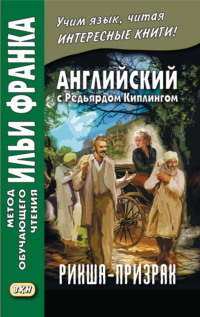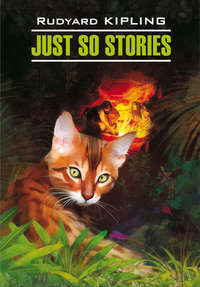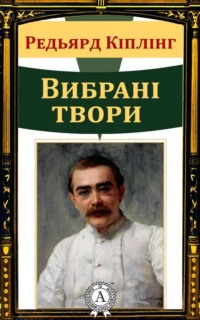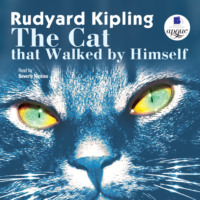 полная версия
полная версияFrom Sea to Sea; Letters of Travel
So the Englishman went into this palace built of stone, bedded on stone, springing out of scarped rock, and reached by stone ways – nothing but stone. Presently, he stumbled across a little temple of Kali, a gem of marble tracery and inlay, very dark and, at that hour of the morning, very cold.
If, as Viollet-le-Duc tells us to believe, a building reflects the character of its inhabitants, it must be impossible for one reared in an Eastern palace to think straightly or speak freely or – but here the annals of Rajputana contradict the theory – to act openly. The cramped and darkened rooms, the narrow smooth-walled passages with recesses where a man might wait for his enemy unseen, the maze of ascending and descending stairs leading nowhither, the ever-present screens of marble tracery that may hide or reveal so much, – all these things breathe of plot and counter-plot, league and intrigue. In a living palace where the sightseer knows and feels that there are human beings everywhere, and that he is followed by scores of unseen eyes, the impression is almost unendurable. In a dead palace – a cemetery of loves and hatreds done with hundreds of years ago, and of plottings that had for their end, though the greybeards who plotted knew it not, the coming of the British tourist with guide-book and sun-hat – oppression gives place to simply impertinent curiosity. The Englishman wandered into all parts of the palace, for there was no one to stop him – not even the ghosts of the dead Queens – through ivory-studded doors, into the women's quarters, where a stream of water once flowed over a chiselled marble channel. A creeper had set its hands upon the lattice there, and there was dust of old nests in one of the niches in the wall. Did the lady of light virtue who managed to become possessed of so great a portion of Jey Singh's library ever set her dainty feet in the trim garden of the Hall of Pleasure beyond the screen-work? Was it in the forty-pillared Hall of Audience that the order went forth that the Chief of Birjooghar was to be slain, and from what wall did the King look out when the horsemen clattered up the steep stone path to the palace, bearing on their saddle-bows the heads of the bravest of Rajore? There were questions innumerable to be asked in each court and keep and cell; but the only answer was the cooing of the pigeons.
If a man desired beauty, there was enough and to spare in the palace; and of strength more than enough. With inlay and carved marble, with glass and colour, the Kings who took their pleasure in that now desolate pile, made all that their eyes rested upon royal and superb. But any description of the artistic side of the palace, if it were not impossible, would be wearisome. The wise man will visit it when time and occasion serve, and will then, in some small measure, understand what must have been the riotous, sumptuous, murderous life to which our Governors and Lieutenant-Governors, Commissioners and Deputy Commissioners, Colonels and Captains and the Subalterns, have put an end.
From the top of the palace you may read if you please the Book of Ezekiel written in stone upon the hillside. Coming up, the Englishman had seen the city from below or on a level. He now looked into its very heart – the heart that had ceased to beat. There was no sound of men or cattle, or grind-stones in those pitiful streets – nothing but the cooing of the pigeons. At first it seemed that the palace was not ruined at all – that soon the women would come up on the house-tops and the bells would ring in the temples. But as he attempted to follow with his eye the turns of the streets, the Englishman saw that they died out in wood tangle and blocks of fallen stone, that some of the houses were rent with great cracks, and pierced from roof to road with holes that let in the morning sun. The drip-stones of the eaves were gap-toothed, and the tracery of the screens had fallen out so that zenana-rooms lay shamelessly open to the day. On the outskirts of the city, the strong-walled houses dwindled and sank down to mere stone-heaps and faint indications of plinth and wall, hard to trace against the background of stony soil. The shadow of the palace lay over two-thirds of the city and the trees deepened the shadow. "He who has bent him o'er the dead" after the hour of which Byron sings, knows that the features of the man become blunted as it were – the face begins to fade. The same hideous look lies on the face of the Queen of the Pass, and when once this is realised, the eye wonders that it could have ever believed in the life of her. She is the city "whose graves are set in the side of the pit, and her company is round about her graves," sister of Pathros, Zoan, and No.
Moved by a thoroughly insular instinct, the Englishman took up a piece of plaster and heaved it from the palace wall into the dark streets. It bounded from a house-top to a window-ledge, and thence into a little square, and the sound of its fall was hollow and echoing, as the sound of a stone in a well. Then the silence closed up upon the sound, till in the far-away courtyard below the roped stallions began screaming afresh. There may be desolation in the great Indian Desert to the westward, and there is desolation on the open seas; but the desolation of Amber is beyond the loneliness either of land or sea. Men by the hundred thousand must have toiled at the walls that bound it, the temples and bastions that stud the walls, the fort that overlooks all, the canals that once lifted water to the palace, and the garden in the lake of the valley. Renan could describe it as it stands to-day, and Verestchaguin could paint it.
Arrived at this satisfactory conclusion, the Englishman went down through the palace and the scores of venomous and suggestive little rooms, to the elephant in the courtyard, and was taken back in due time to the Nineteenth Century in the shape of His Highness, the Maharaja's Cotton-Press, returning a profit of twenty-seven per cent, and fitted with two engines, of fifty horse-power each, an hydraulic press, capable of exerting a pressure of three tons per square inch, and everything else to correspond. It stood under a neat corrugated iron roof close to the Jeypore Railway Station, and was in most perfect order, but somehow it did not taste well after Amber. There was aggressiveness about the engines and the smell of the raw cotton.
The modern side of Jeypore must not be mixed with the ancient.
IV
THE TEMPLE OF MAHADEO AND THE MANNERS OF SUCH AS SEE INDIA. THE MAN BY THE WATER-TROUGHS AND HIS KNOWLEDGE. THE VOICE OF THE CITY AND WHAT IT SAID. PERSONALITIES AND THE HOSPITAL. THE HOUSE BEAUTIFUL OF JEYPORE AND ITS BUILDERS.
From the Cotton-Press the Englishman wandered through the wide streets till he came into an Hindu temple – rich in marble stone and inlay, and a deep and tranquil silence, close to the Public Library of the State. The brazen bull was hung with flowers, and men were burning the evening incense before Mahadeo; while those who had prayed their prayer beat upon the bells hanging from the roof and passed out, secure in the knowledge that the God had heard them. If there be much religion, there is little reverence, as Westerns understand the term, at the services of the Gods of the East. A tiny little maiden, child of a monstrously ugly, wall-eyed priest, staggered across the marble pavement to the shrine and threw, with a gust of childish laughter, the blossoms she was carrying into the lap of the Great Mahadeo himself. Then she made as though she would leap up to the bell and ran away, still laughing, into the shadow of the cells behind the shrine, while her father explained that she was but a baby and that Mahadeo would take no notice. The temple, he said, was specially favoured by the Maharaja, and drew from lands an income of twenty thousand rupees a year. Thakoors and great men also gave gifts out of their benevolence; and there was nothing in the wide world to prevent an Englishman from following their example.
By this time – for Amber and the Cotton-Press had filled the hours – night was falling, and the priests unhooked the swinging jets and began to light up the impassive face of Mahadeo with gas. They used Swedish matches!
Full night brought the hotel and its curiously composed human menagerie.
There is, if a work-a-day world will believe, a society entirely outside, and unconnected with, that of the Station – a planet within a planet, where nobody knows anything about the Collector's wife, the Colonel's dinner-party, or what was really the matter with the Engineer. It is a curious, an insatiably curious, thing, and its literature is Newman's Bradshaw. Wandering "old arms-sellers" and others live upon it, and so do the garnetmen and the makers of ancient Rajput shields. The world of the innocents abroad is a touching and unsophisticated place, and its very atmosphere urges the Anglo-Indian unconsciously to an extravagant mendacity. Can you wonder, then, that a guide of long-standing should in time grow to be an accomplished liar?
Into this world sometimes breaks the Anglo-Indian returned from leave, or a fugitive to the sea, and his presence is like that of a well-known land-mark in the desert. The old arms-seller knows and avoids him, and he is detested by the jobber of gharis who calls every one "my lord" in English, and panders to the "glaring race anomaly" by saying that every carriage not under his control is "rotten, my lord, having been used by natives." One of the privileges of playing at tourist is the brevet-rank of "Lord."
There are many, and some very curious, methods of seeing India. One of these is buying English translations of the more Zolaistic of Zola's novels and reading them from breakfast to dinner-time in the verandah. Yet another, even simpler, is American in its conception. Take a Newman's Bradshaw and a blue pencil, and race up and down the length of the Empire, ticking off the names of the stations "done." To do this thoroughly, keep strictly to the railway buildings and form your conclusions through the carriage-windows. These eyes have seen both ways of working in full blast; and, on the whole, the first is the most commendable.
Let us consider now with due reverence the modern side of Jeypore. It is difficult to write of a nickel-plated civilisation set down under the immemorial Aravalis in the first state of Rajputana. The red-grey hills seem to laugh at it, and the ever-shifting sand-dunes under the hills take no account of it, for they advance upon the bases of the monogrammed, coronet-crowned lamp-posts, and fill up the points of the natty tramways near the Waterworks, which are the outposts of the civilisation of Jeypore.
Escape from the city by the Railway Station till you meet the cactus and the mud-bank and the Maharaja's Cotton-Press. Pass between a tramway and a trough for wayfaring camels till your foot sinks ankle-deep in soft sand, and you come upon what seems to be the fringe of illimitable desert – mound upon mound of tussocks overgrown with plumed grass where the parrots sit and swing. Here, if you have kept to the road, you shall find a dam faced with stone, a great tank, and pumping machinery fine as the heart of a municipal engineer can desire – pure water, sound pipes, and well-kept engines. If you belong to what is sarcastically styled an "able and intelligent municipality" under the British Rule, go down to the level of the tank, scoop up the water in your hands and drink, thinking meanwhile of the defects of the town whence you came. The experience will be a profitable one. There are statistics in connection with the Waterworks figures relating to "three-throw-plungers," delivery and supply, which should be known to the professional reader. They would not interest the unprofessional who would learn his lesson among the thronged standpipes of the city.
While the Englishman was preparing in his mind a scathing rebuke for an erring municipality that he knew of, a camel swung across the sands, its driver's jaw and brow bound mummy-fashion to guard against the dust. The man was evidently a stranger to the place, for he pulled up and asked the Englishman where the drinking-troughs were. He was a gentleman and bore very patiently with the Englishman's absurd ignorance of his dialect. He had come from some village, with an unpronounceable name, thirty kos away, to see his brother's son, who was sick in the big Hospital. While the camel was drinking the man talked, lying back along his mount. He knew nothing of Jeypore, except the names of certain Englishmen in it, the men who, he said, had made the Waterworks and built the Hospital for his brother's son's comfort.
And this is the curious feature of Jeypore; though happily the city is not unique in its peculiarity. When the late Maharaja ascended the throne, more than fifty years ago, it was his royal will and pleasure that Jeypore should advance. Whether he was prompted by love for his subjects, desire for praise, or the magnificent vanity with which Jey Singh must have been so largely dowered, are questions that concern nobody. In the latter years of his reign, he was supplied with Englishmen who made the State their fatherland, and identified themselves with its progress as only Englishmen can. Behind them stood the Maharaja ready to spend money with a lavishness that no Supreme Government would dream of; and it would not be too much to say that they together made the State what it is. When Ram Singh died, Madho Singh, his successor, a conservative Hindu, forbore to interfere in any way with the work that was going forward. It is said in the city that he does not overburden himself with the cares of State, the driving power being mainly in the hands of a Bengali, who has everything but the name of Minister. Nor do the Englishmen, it is said in the city, mix themselves with the business of government; their business being wholly executive.
They can, according to the voice of the city, do what they please, and the voice of the city – not in the main roads, but in the little side-alleys where the stall-less bull blocks the path – attests how well their pleasure has suited the pleasure of the people. In truth, to men of action few things could be more delightful than having a State of fifteen thousand square miles placed at their disposal, as it were, to leave their mark on. Unfortunately for the vagrant traveller, those who work hard for practical ends prefer not to talk about their doings, and he must, therefore, pick up what information he can at second-hand or in the city. The men at the standpipes explain that the Maharaja Sahib's father gave the order for the Waterworks and that Yakub (Jacob) Sahib made them – not only in the city, but out away in the district. "Did the people grow more crops thereby?" "Of course they did. Were canals made only to wash in?" "How much more crops?" "Who knows? The Sahib had better go and ask some official." Increased irrigation means increase of revenue for the State somewhere, but the man who brought about the increase does not say so.
After a few days of amateur Globe-trotting, a shamelessness great as that of the other loafer – the red-nosed man who hangs about one garden and is always on the eve of starting for Calcutta – possesses the masquerader; so that he feels equal to asking a Resident for a parcel-gilt howdah, or dropping into dinner with a Lieutenant-Governor. No man has a right to keep anything back from a Globe-trotter, who is a mild, temperate, gentlemanly, and unobtrusive seeker after truth. Therefore he who, without a word of enlightenment, sends the visitor into a city which he himself has beautified and adorned and made clean and wholesome, deserves unsparing exposure. And the city may be trusted to betray him. The malli in the Ram Newas Gardens – Gardens which are finer than any in India and fit to rank with the best in Paris – says that the Maharaja gave the order and Yakub Sahib made the Gardens. He also says that the Hospital just outside the Gardens was built by Yakub Sahib, and if the Sahib will go to the centre of the Gardens, he will find another big building, a Museum by the same hand.
But the Englishman went first to the Hospital, and found the out-patients beginning to arrive. A Hospital cannot tell lies about its own progress as a municipality can. Sick folk either come or lie in their own villages. In the case of the Mayo Hospital, they came, and the operation book showed that they had been in the habit of coming. Doctors at issue with provincial and local administrations, Civil Surgeons who cannot get their indents complied with, ground-down and mutinous practitioners all India over, would do well to visit the Mayo Hospital, Jeypore. They might, in the exceeding bitterness of their envy, be able to point out some defects in its supplies, or its beds, or its splints, or in the absolute isolation of the women's quarters from the men's.
From the Hospital the Englishman went to the Museum in the centre of the Gardens, and was eaten up by it, for Museums appealed to him. The casing of the jewel was in the first place superb – a wonder of carven white stone of the Indo-Saracenic style. It stood on a stone plinth, and was rich in stone-tracery, green marble columns from Ajmir, red marble, white marble colonnades, courts with fountains, richly carved wooden doors, frescoes, inlay, and colour. The ornamentation of the tombs of Delhi, the palaces of Agra, and the walls of Amber have been laid under contribution to supply the designs in bracket, arch, and soffit; and stone-masons from the Jeypore School of Art have woven into the work the best that their hands could produce. The building in essence if not in the fact of to-day, is the work of Freemasons. The men were allowed a certain scope in their choice of detail and the result – but it should be seen to be understood, as it stands in those Imperial Gardens. And, observe, the man who had designed it, who had superintended its erection, had said no word to indicate that there were such a thing in the place, or that every foot of it, from the domes of the roof to the cool green chunam dadoes and the carving of the rims of the fountains in the courtyard, was worth studying! Round the arches of the great centre court are written in Sanskrit and Hindi, texts from the great Hindu writers of old, bearing on the beauty of wisdom and the sanctity of true knowledge.
In the central corridor are six great frescoes, each about nine feet by five, copies of illustrations in the Royal Folio of the Razmnameh, the Mahabharata, which Abkar caused to be done by the best artists of his day. The original is in the Museum, and he who can steal it will find a purchaser at any price up to fifty thousand pounds.
V
OF THE SORDIDNESS OF THE SUPREME GOVERNMENT ON THE REVENUE SIDE; AND OF THE PALACE OF JEYPORE. A GREAT KING'S PLEASURE-HOUSE, AND THE WORK OF THE SERVANTS OF STATE.
Internally, there is, in all honesty, no limit to the luxury of the Jeypore Museum. It revels in "South Kensington" cases – of the approved pattern – that turn the beholder homesick, and South Kensington labels, whereon the description, measurements, and price of each object are fairly printed. These make savage one who knows how labelling is bungled in some of the Government Museums – our starved barns that are supposed to hold the economic exhibits, not of little States, but of great Provinces.
The floors are of dark red chunam, overlaid with a discreet and silent matting; the doors, where they are not plate glass, are of carved wood, no two alike, hinged by sumptuous brass hinges on to marble jambs and opening without noise. On the carved marble pillars of each hall are fixed revolving cases of the South Kensington pattern to show textile fabrics, gold lace, and the like. In the recesses of the walls are more cases, and on the railing of the gallery that runs round each of the three great central rooms, are fixed low cases to hold natural history specimens and wax models of fruits and vegetables.
Hear this, Governments of India from the Punjab to Madras! The doors come true to the jamb, the cases, which have been through a hot weather, are neither warped nor cracked, nor are there unseemly tallow-drops and flaws in the glasses. The maroon cloth, on or against which the exhibits are placed, is of close texture, untouched by the moth, neither stained nor meagre nor sunfaded; the revolving cases revolve freely without rattling; there is not a speck of dust from one end of the building to the other, because the menial staff are numerous enough to keep everything clean, and the Curator's office is a veritable office – not a shed or a bath-room, or a loose-box partitioned from the main building. These things are so because money has been spent on the Museum, and it is now a rebuke to all other Museums in India from Calcutta downwards. Whether it is not too good to be buried away in a native State is a question which envious men may raise and answer as they choose. Not long ago, the editor of a Bombay paper passed through it, but having the interests of the Egocentric Presidency before his eyes, dwelt more upon the idea of the building than its structural beauties; saying that Bombay, who professed a weakness for technical education, should be ashamed of herself. And he was quite right.
The system of the Museum is complete in intention, as are its appointments in design. At present there are some fifteen thousand objects of art, covering a complete exposition of the arts, from enamels to pottery and from brass-ware to stone-carving, of the State of Jeypore. They are compared with similar arts of other lands. Thus a Damio's sword – a gem of lacquer-plated silk and stud-work – flanks the tulwars of Marwar and the jezails of Tonk; and reproductions of Persian and Russian brass-work stand side by side with the handicrafts of the pupils of the Jeypore School of Art. A photograph of His Highness the present Maharaja is set among the arms, which are the most prominent features of the first or metal-room. As the villagers enter, they salaam reverently to the photo, and then move on slowly, with an evidently intelligent interest in what they see. Ruskin could describe the scene admirably – pointing out how reverence must precede the study of art, and how it is good for Englishmen and Rajputs alike to bow on occasion before Geisler's cap. They thumb the revolving cases of cloths do those rustics, and artlessly try to feel the texture through the protecting glass. The main object of the Museum is avowedly provincial – to show the craftsman of Jeypore the best that his predecessors could do, and what foreign artists have done. In time – but the Curator of the Museum has many schemes which will assuredly bear fruit in time, and it would be unfair to divulge them. Let those who doubt the thoroughness of a Museum under one man's control, built, filled, and endowed with royal generosity – an institution perfectly independent of the Government of India – go and exhaustively visit Dr. Hendley's charge at Jeypore. Like the man who made the building, he refuses to talk, and so the greater part of the work that he has in hand must be guessed at.
At one point, indeed, the Curator was taken off his guard. A huge map of the kingdom showed in green the portions that had been brought under irrigation, while blue circles marked the towns that owned dispensaries. "I want to bring every man in the State within twenty miles of a dispensary – and I've nearly done it," said he. Then he checked himself, and went off to food-grains in little bottles as being neutral and colourless things. Envy is forced to admit that the arrangement of the Museum – far too important a matter to be explained off-hand – is Continental in its character, and has a definite end and bearing – a trifle omitted by many institutions other than Museums. But – in fine, what can one say of a collection whose very labels are gilt-edged! Shameful extravagance? Nothing of the kind – only finish, perfectly in keeping with the rest of the fittings – a finish that we in kutcha3 India have failed to catch.
From the Museum go out through the city to the Maharaja's Palace – skilfully avoiding the man who would show you the Maharaja's European billiard-room, – and wander through a wilderness of sunlit, sleepy courts, gay with paint and frescoes, till you reach an inner square, where smiling grey-bearded men squat at ease and play chaupur44 – just such a game as cost the Pandavs the fair Draupadi – with inlaid dice and gayly lacquered pieces. These ancients are very polite and will press you to play, but give no heed to them, for chaupur is an expensive game – expensive as quail-fighting, when you have backed the wrong bird and the people are laughing at your inexperience. The Maharaja's Palace is gay, overwhelmingly rich in candelabra, painted ceilings, gilt mirrors, and other evidences of a too hastily assimilated civilisation; but, if the evidence of the ear can be trusted, the old, old game of intrigue goes on as merrily as of yore. A figure in saffron came out of a dark arch into the sunlight, almost falling into the arms of one in pink. "Where have you come from?" "I have been to see – " the name was unintelligible. "That is a lie; you have not!" Then, across the court, some one laughed a low, croaking laugh. The pink and saffron figures separated as though they had been shot, and disappeared into separate bolt-holes. It was a curious little incident, and might have meant a great deal or just nothing at all. It distracted the attention of the ancients bowed above the chaupur cloth.











